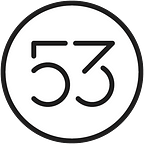How To Optimize Learning Through Reflection
For the things we have to learn before we can do them, we learn by doing them.
–Aristotle
While the philosopher Aristotle argued for taking frequent action, simply doing a lot without reflecting on the motivation behind our work rarely leads to meaningful learnings.
But taking time to reflect on our experiences can help change that. From my professional experience both as a life coach for startup CEOs and learning designer at Hyper Island, I have found that reflection is the single most effective way to optimize learning.
Through quiet reflection, you’re able to process experiences through four different levels of understanding. At Hyper Island we call this the Well of Knowledge, a useful metaphor to illustrate the different layers and how you need to swim through the top layers to get to the bottom.
The point is not that the top levels are unimportant or that only the deeper levels are important. What matters is that you can only access the deeper levels by going through the top levels. It’s a step-by-step process, and here’s how you can do it with Paper in under 15 minutes.
First draw an XY graph of your day. Don’t overthink it. Just draw the ups and downs as you remember them, then add keywords to the peaks and valleys. It might look something like this:
This step helps you recall the experiences of the past day — the top layer of the well of knowledge.
Secondly, ask yourself: how did I feel through these ups and downs? Not just good or bad; try to be specific. Was it sadness or a sense of loneliness? Was it excitement or a sense of playful joy?
Check with your body as well. Where did you feel these emotions? Tapping into our emotions is something we don’t do much in Western culture, which celebrates rational and scientific approaches over intuition. But in exercises like this one, acknowledging your feelings can help to create “navigations points” that facilitate meaningful learning. It’s when you get out of your comfort zone that learning happens, and it’s emotion that help to pinpoint the times when we’re removed from our comfort zones.
Next, ask yourself: What were my most powerful insights? This is where you really begin to extract the learnings.
Lastly, consider this: what specific actions can you take to incorporate what you learn into your life? This is where you can apply your experiences to change your life and behaviors. You can’t do this last step without doing the first three. Just swim slowly into the well. Step by step. Each answer feeds into the next question.
Try this reflection exercise at the end of your work day or, even better, in the morning to reflect on the previous day.
If you have questions or come across any challenges related to your practice, feel free to reach out on Twitter @thnkclrly. I would be delighted to help you.
Mathias Jakobsen is the creator of Think Clearly. He currently works as a learning designer at Hyper Island.
